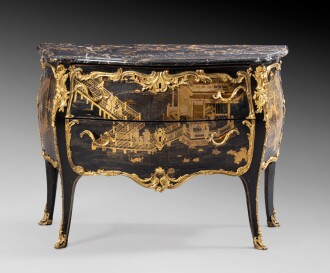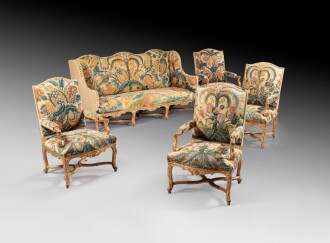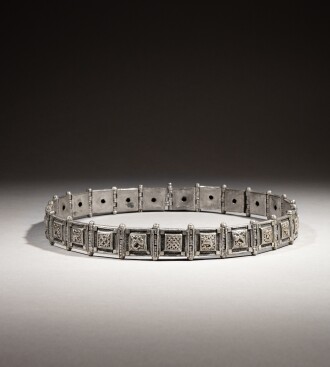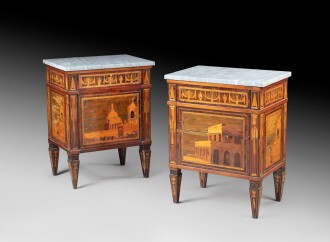T he Important Mobilier, Objets d'art et Orfèvrerie auction presents a group of high-quality works with prestigious and, in some cases, royal provenance. Highlights include a carpet from the Savonnerie manufactory at Chaillot, probably created for one of Louis XV's châteaux; wall lights featuring and eagle and a caduceus, identical to the one delivered by the marchand-mercier Dominique Daguerre for Louis XVI's cabinet de la garde de robe in Versailles, and a Hispanic silver-gilt basin from the 16th century, from the personal collection of the King of Portugal Dom Fernando II. There are also several pieces of furniture and objets d'art that were once in the collections of La Rochefoucauld at the Château de Verteuil in Charente.
Auction Highlights
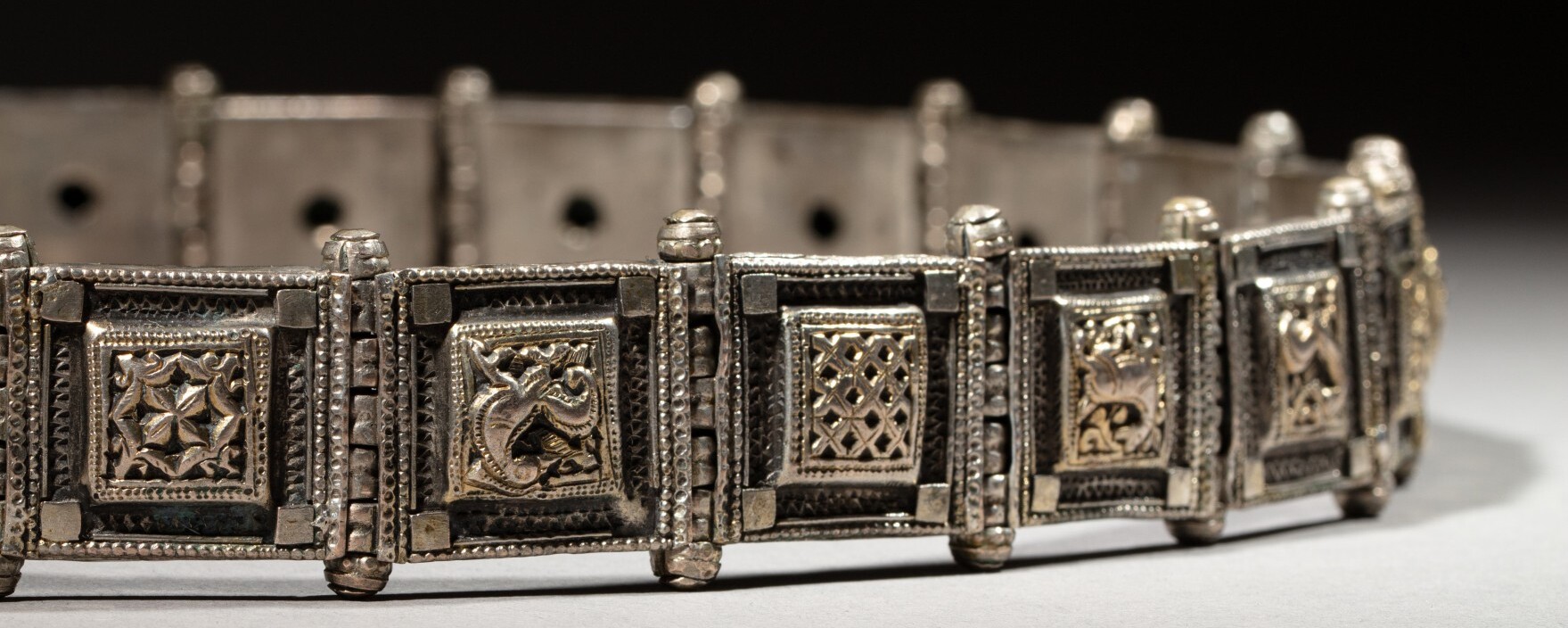
The discovery of the Americas in 1492, and its subsequent colonisation, allowed Europe, and in particular the Iberian Peninsula, to benefit from an influx of impressive quantities of silver over the centuries that followed. Ore arrived by pirogue from Alto Peru to the mouth of the Rio de la Plata, Spanish for “river of silver”. This sparkling cargo gave both the river and the country that borders it their names, although paradoxically, Argentina has almost no mines of this precious metal at all.
In our sale, several objects testify to this sudden opulence: Firstly, a silver and vermeil filigree reliquary in the shape of a double-headed eagle with the Marian symbol "AM" over its heart, likely made in South America around 1600, then two pieces that are more Iberian; a sumptuous vermeil basin with naval combat decoration dating from the 16th century that was once in the collection of King Fernando II of Portugal and an ewer, also in vermeil, from around 1600 decorated with trophies of fruit and masks of bearded men with feathers. The flow of precious metals continued and included in the sale is an astonishing and impressive pair of seven-light silver candelabra, 70 cm high, not stamped, but most likely from Brazil, circa 1830, decorated with two figures, a man and a woman in indigenous dress, in partially black lacquered silver.
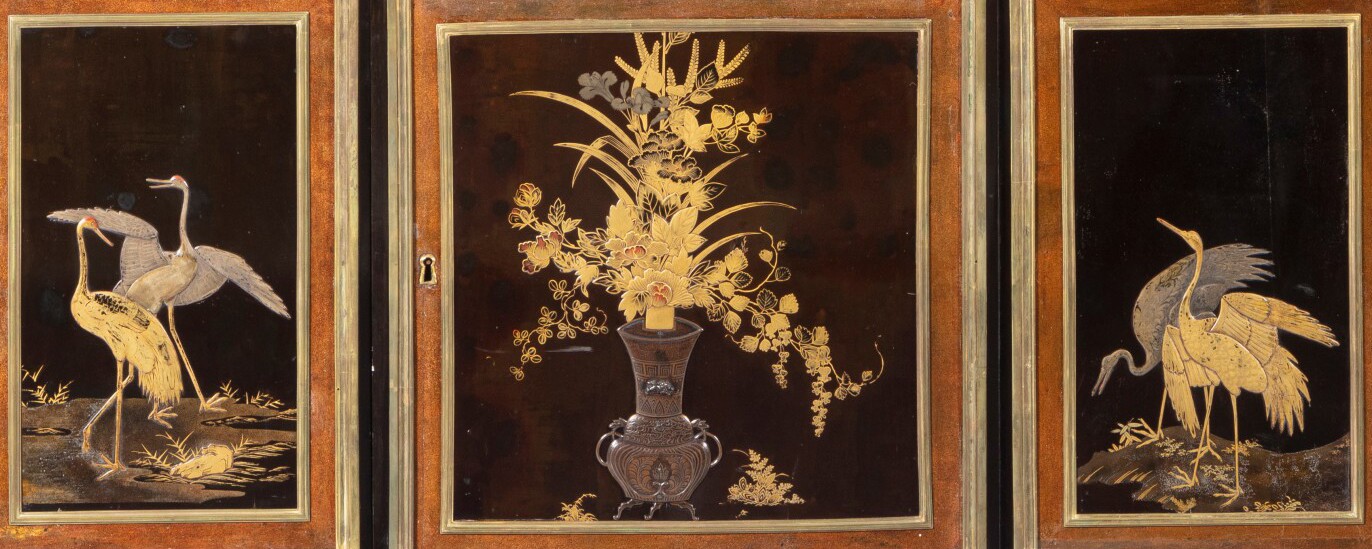
The sale includes a small group of furniture, which perfectly reflects the passion for lacquer in 17th and 18th century European decorative arts.
The Florentine cabinet "en vernis façon de la Chine" (lot 6) uses Asian lacquer in a pastiche of gilded ornamentation on a black background with representations of birds on the large panels and the reverse of the doors, inspired by the antique Ara Pacis copied by Italian ornamentalists in the 16th century.
The sécretaire cabinet attributed to Giles Grendey (lot 10) stands apart with its background in deep blue that distinguishes it from the more frequent decor on a red background. Here the gilded ornamentation is directly inspired by Asian compositions: the scarcity and cost of oriental panels pushed European artisan varnishers to be creative in order to meet the high demand for exoticism.
The pair of 18th century consoles (lot 27) illustrates lacquer furniture as it was designed in China. The tops are done in relief with mother-of-pearl inlays and openwork mounts. The frieze and the sides are decorated with stylised dragons like those found on classical Chinese furniture of the 17th and 18th centuries.
On the Chinese lacquer commode by Dubois (lot 32), the principal intention of the cabinetmaker was to enrich the piece with oriental panels in order to give it the shine reminiscent of Chinese cabinets. The adapting of Chinese lacquer panels to a curved surface is a difficult endeavour that demands ingenuity and technique from a cabinetmaker. The decor on this commode is also enhanced by the skilful arrangement of the gilded bronzes: the mounts themselves serve not only to harmonize but to embellish this outstanding piece.
The commode by Weisweiler (lot 49) in Japanese lacquer displays typical Japanese motifs of cranes and a bouquet in an archaic bronze vase. The sides of the panels have asymmetrical compositions that the western eye might seek to fill in with additional elements. Here again, the cabinetmaker has used gilt-bronze mounts to highlight the decor with a play of double baguettes that underline the aventurine green lacquer and accentuate the contrasts.
Read Less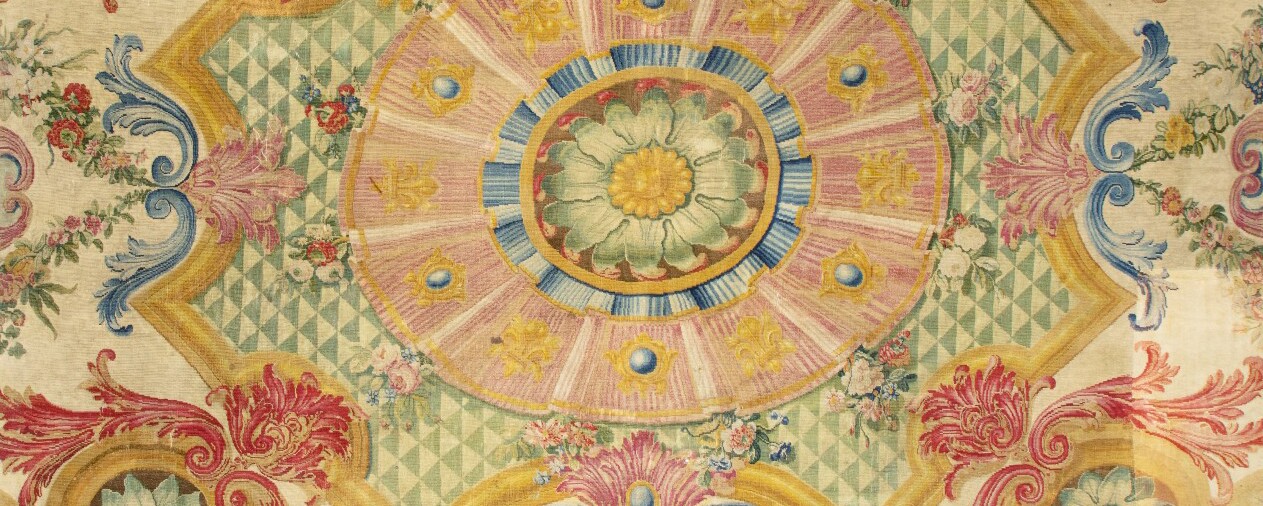
The Savonnerie carpet (lot 35) and the pair of wall-lights (lot 50) bear a royal pedigree.
Louis XV for the carpet, which was woven for the sovereign's dining room at the Trianon. The cartoon comes from Pierre-Josse Perrot, whose compositions broke with the style of his predecessors. The liveliness of the colours and his particular style combine the magnificence inherited from the Grand Siècle with the exuberance of the Rocaille. The presence of royal attributes tells us for whom it was made. Several weavings, with variations, were used to furnish other royal castles.
Louis XVI owned an identical pair of wall-lights, received in 1788 for the clothes cabinet at the Château de Versailles. Most likely made under the direction of the marchand-mercier Dominique Daguerre, it is more than probable that the other known pairs were also intended to decorate another royal chamber. However, the absence of archival documents makes it impossible to determine their initial destination, just as the lack of inventory numbers on the known examples only confirms the impossibility of determining which one was delivered to the king.
Read Less
La Rochefoucauld family history is entwined with that of this imposing building, which has dominated the Charente for a thousand years; from the first stronghold built in the Middle Ages to the present day castle. François I de La Rochefoucauld received King François I there in 1516, Charles V stayed there a few years later and in the 16th century, under the impetus of Anne de Polignac, the famous library was built. The lords of Verteuil rallied around the Protestants and all along kings and queens were welcomed to the castle: Henri IV, Catherine de Medici’s, Louis XIII, Anne of Austria. The château survived the Revolution and Hippolyte de La Rochefoucauld, minister during the Restoration, turned it into a romantic haven that was perpetuated through the 19th century, which conserved its interior decoration borrowed from earlier eras. It is this spirit that is reflected today in the pieces to be offered at auction. The provenance, collection of La Rochefoucauld from the Château de Verteuil, is indicated for each lot, allowing new buyers to appropriate a small part of the rich history of this extraordinary place.
Read Less